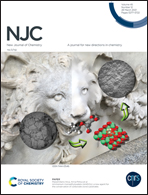Study on heteropolyacid-based catalysts with high activity and reusability for isoprene synthesis from formaldehyde and isobutene
Abstract
Silica-supported heteropolyacid catalysts with different pore structures were synthesized via impregnation method using silicalite-1 with three-dimensional MFI structure, two-dimensional hexagonal SBA-15 and amorphous silica as supports. Moreover, these catalysts were employed for the gas phase one-step synthesis of isoprene from isobutene and formaldehyde. The result showed that the activity of silicotungstic acid supported on silicalite-1 (SiW/S-1) catalysts was significantly better than that on other supports, which indicates that the three-dimensional MFI structure and suitable pore size of silicalite-1 were more conducive to the production of isoprene. Furthermore, the formation rate of isoprene over 20% SiW/S-1 catalyst reached up to 8.5 times that on the bulk silicotungstic acid catalyst, which could be attributed to the highly dispersed silicotungstic acid and the suitable acidity produced by the strong interaction between silicotungstic acid and silicalite-1. In addition, the 20 wt% SiW/S-1 catalyst exhibited excellent reusability and was reused 10 times without obvious loss of activity.



 Please wait while we load your content...
Please wait while we load your content...